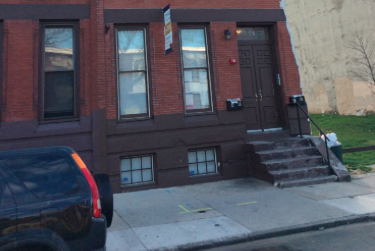
March 07, 2016
 Source /University of Pennsylvania
Source /University of Pennsylvania
Formerly vacant property on the 1500 block of Diamond St.
A newly published study looking at young Philadelphia homicide victims found there are often environmental commonalities in cases where the victims were killed on the streets, like the existence of vacant lots and insufficient lighting nearby.
The study was led by Dr. Alison J. Culyba, a researcher at The Children’s Hospital of Philadelphia, and was published Monday in JAMA Pediatrics.
To conduct the study, Culyba and her team looked at Philadelphia residents ages 13 to 20 who were killed between 2010 and 2012. Among those incidents, they then looked at the conditions in the surrounding neighborhoods where the homicides took place, including the presence of street lighting, vacant lots and security bars on windows.
Researchers found that the odds of a young person being a victim of a homicide were significantly higher in locations near vacant lots, homes with security bars on windows and streets lacking lighting.
What this suggests, the authors note, is that conducting simple and inexpensive revitalization efforts in blighted urban areas, including targeted areas in Philadelphia, could reduce the rate of homicides, particularly those involving young people.
Read more on the study at JAMA Pediatrics.